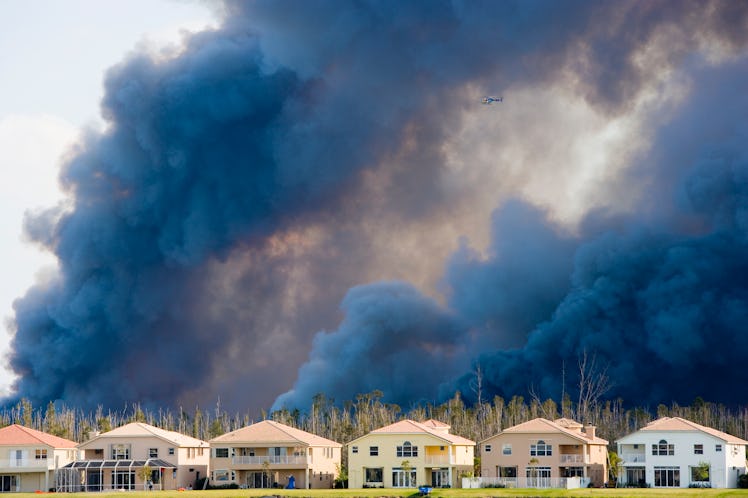Everyone Is Moving Into Dangerous Wildfire Zones, New Maps Show
Those relocating may be trading one environmental hazard for another.

According to a new study published in the journal Frontiers In Human Dynamics, climate change influences where Americans choose to live — though those relocating to avoid hurricane zones appear to be trading one hazard for another.
The 10-year national study from researchers at The University of Vermont Gund Institute For Environment found that as Americans increasingly flee areas likely to get hit by hurricanes, they’re relocating to regions plagued by extreme summer heat and some of the greatest wildfire risks in the United States. Thanks to climate change, these heat-related environmental hazards are intensifying, which is especially bleak considering the significant damage they already cause to people and property every year.
To analyze migration habits, researchers began by creating a novel dataset for the years 2010-2020 from publicly available data broken down by county. They gathered information on net migration rates, natural amenities, natural hazards, and socioeconomic factors for every county in the United States and organized the data into tables.
Some data on the natural features that make places more attractive to live in, such as climate, water bodies, topographic diversity, and forest cover, was only available as raster data, which refers to information presented through grids overlaid onto maps. In this instance, researchers overlaid available data with maps delineating county boundaries in order to make consistent comparisons with the tabular datasets.
The published study acknowledged limitations due to the unavailability of some data at the county level. Study authors recognized that housing values, cost of living, and sociocultural factors like professional networkers and family ties are all important drivers of migration but that they could not find data for those factors broken down by county.
Despite those limitations, two trends were clear: over the past decade, people have been moving toward metropolitan areas with relatively hot summers, as well as toward areas most at risk of wildfire.
While it might seem counterintuitive that people would relocate to places that get uncomfortably hot, it’s a trend facilitated by technology — though there are worries that technology may not be able to keep pace with climate trends.
“As air conditioning has become more prevalent, it has enabled more and more population growth in hot climates such as Arizona, Nevada and Texas,” researchers wrote in the study. “However, as average temperatures continue to warm with climate change, these areas could become more inhospitable. Temperatures could reach a point where they affect residents' health, well-being, and quality of life, even with adaptations such as air conditioning.”
Climate change is also increasing temperatures and fire risk in places typically thought of as more lush and temperate. For instance, anyone who moved to the Pacific Northwest hoping to find a cool summer haven may feel hard done after experiencing a heat dome weather event that smashed temperature records and higher than usual wildfire activity over the last two years.
Looking ahead, the study authors hope their discoveries will help people make more informed decisions moving forward.
“We hope our findings will contribute to more awareness of these growing dangers while providing empirical evidence to guide planners and policymakers as they design strategies for climate resilience and hazard preparedness,” they wrote.
And who knows? Maybe Zillow will add a climate crisis score alongside property value and school district ratings to help homebuyers find that perfect bungalow someday.